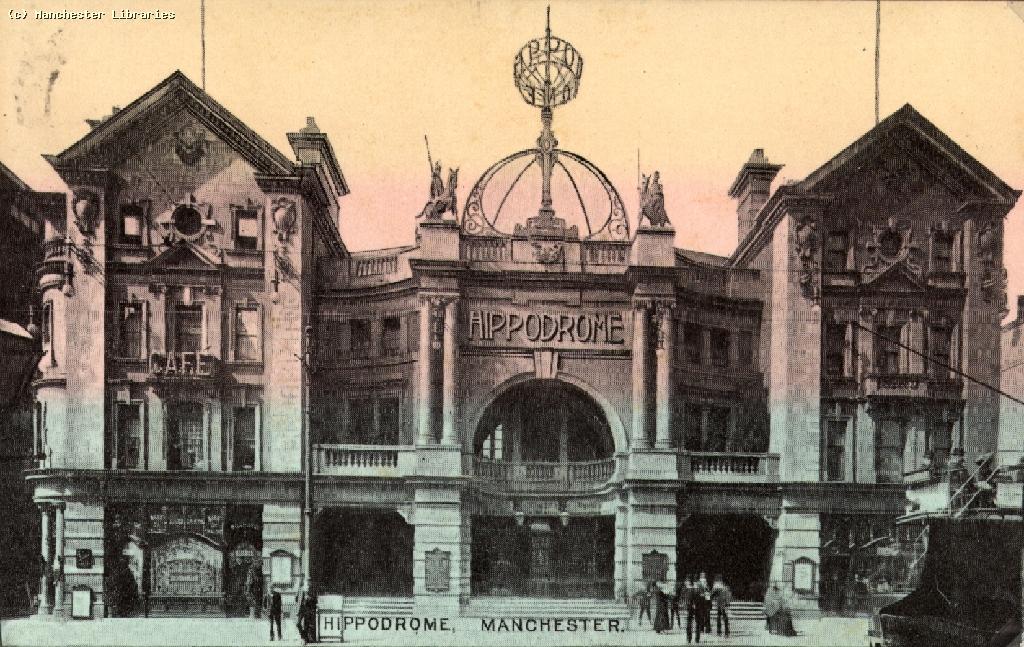Ask anyone to name Manchester’s most beautiful buildings and you’ll get answers as far-reaching as “The Midland”, “London Road Fire Station” and if you’re asking me, the Brutalist beauty of UMIST’s Renold Building.
But there’s one building that nobody will ever say because a) it was widely mocked for years and b) it was knocked down in the 1930s – just 35 years after it was built. The thing is, this building was quite possibly the city’s most breathtaking architectural marvel ever.
The Hippodrome was opened to huge fanfare on Oxford Road in 1904 by Sir Oswald Stoll for £45,000, around £5.5m today.

A purpose-built theatre, it was designed by one of the world’s most respected and talented designers – Frank Matcham, who during his 40-year career was responsible for the design and construction of over 90 theatres and the redesign and refurbishment of a further 80 throughout Britain.
It’s a curiosity that after Matcham’s death in 1920, from blood poisoning from cutting his fingernails too short, his theatres were mocked by architects for decades, and local authorities did very little to preserve and care for his buildings. It was only around the 1970s that his buildings were taken seriously, and his genius became widely recognised.
The Hippodrome was an absolute marvel, an Arabesque style with ornate marble staircases, steps and balustrades. Best of all though, the Hippodrome was designed as “a Variety Theatre and Circus” that would stage “the most amazing water spectaculars and moving films“.

A painting by George Richmond of the London Hippodrome set up for a water spectacular
So Matcham designed a stage that sat alongside a large circus ring. Below the ring was a massive circular tank that held 70,000 gallons of water, heated by its very own furnace. A false floor in the tank could be raised and lowered using a hydraulic pump.
Also beneath the auditorium were huge stables – enough for 100 horses and all of the cages for the myriad of exotic animals that were to be displayed in the circus.
The opening night was Boxing Day 1904 and it was called ‘Tally-Ho! A Hunting Sensation in Four Acts‘ and included dogs, elephants, acrobats, and high wire performers. They also pulled out the big guns and put on a water show ‘spectacular’ which saw soldiers and horses plunging into the water as they recreated Native American hunts.

The Hippodrome in the 30's
There was even an instance in London of elephants being shepherded onto waterslides – but I’m not sure if this happened in Manchester – although I wouldn’t put it past them.
The evening would typically then end with ‘The Bioscope‘ which was a large screen on stage fronted by a fairground organ and usually dancing girls. Silent movies would be projected onto the screen alongside the music and performance. Audiences, even after seeing elephants swimming around, would be completely enthralled by these moving pictures – which brings us neatly to the Hippodrome’s premature demise.

It was open a measly 31 years until it was demolished to make way for a brand-new art deco Gaumont Cinema. In 6 months it was flattened and the new building set in place – forgotten as quickly as it was erected. The building’s demolition coincided with the downturn of variety and theatre in the UK, brought on by movies, which were much cheaper to show and continued to delight audiences.
As you probably already know, the Gaumont remained at the top of Oxford Road until 1974 when it became a well-known nightclub – Rotters – before eventually being demolished altogether in the early 90s.
It’s now an NPC Car Park. What a shame.


